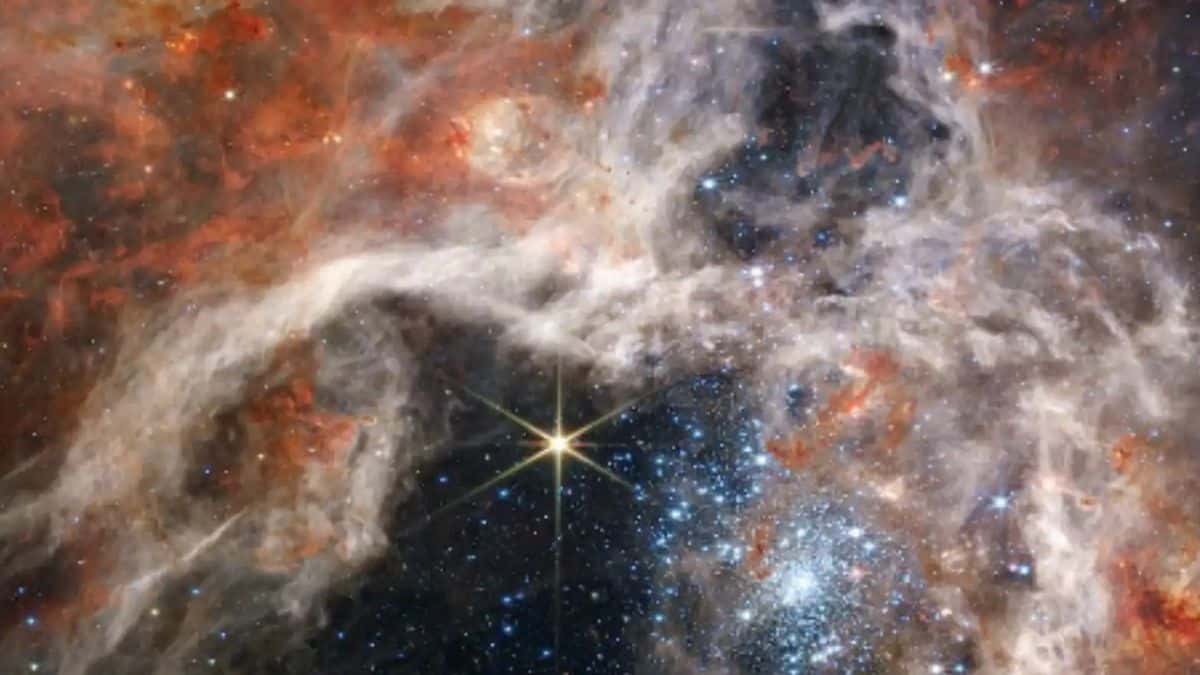Here is what you need to know about ‘Tarantula Nebula’, captured by James Webb Telescope

Thousands of never-before-seen young stars were discovered in the stellar nursery 30 Doradus by NASA’s James Webb Space Telescope. The Tarantula Nebula, so named because of the appearance of its dusty filaments in previous telescope images, has long been a favorite of astronomers studying star formation. Webb discovers distant background galaxies as well as the detailed structure and composition of the nebula’s gas and dust.
The Tarantula Nebula is the largest and brightest star-forming region in the Local Group of galaxies, which is the group of galaxies closest to our Milky Way. It is known to be the home of the hottest, most massive stars. Three of Webb’s high-resolution infrared instruments were directed at the Tarantula. Observed using Webb’s Near-Infrared Camera.
The NIRCam image’s cavity has been hollowed out by blistering radiation from a cluster of massive young stars, which sparkle pale blue in the image. Only the densest areas of the nebula’s surroundings resist erosion by the powerful stellar winds of these stars, forming pillars that appear to point back toward the cluster. These pillars house forming protostars, which will eventually emerge from their dusty cocoons and contribute to the formation of the nebula.
One very young star was caught doing just that by Webb’s Near-Infrared Spectrograph. Previously, astronomers suspected that this star was older and in the process of clearing out a bubble around itself. However, NIRSpec revealed that the star was only just emerging from its pillar and was still surrounded by an insulating cloud of dust. This episode of star formation-in-action could not have been revealed without Webb’s high-resolution spectra at infrared wavelengths.
One of the reasons astronomers are interested in the Tarantula Nebula is that it has a similar chemical composition to the massive star-forming regions observed at the universe’s “cosmic noon,” when the universe was only a few billion years old and star formation was at its peak.


